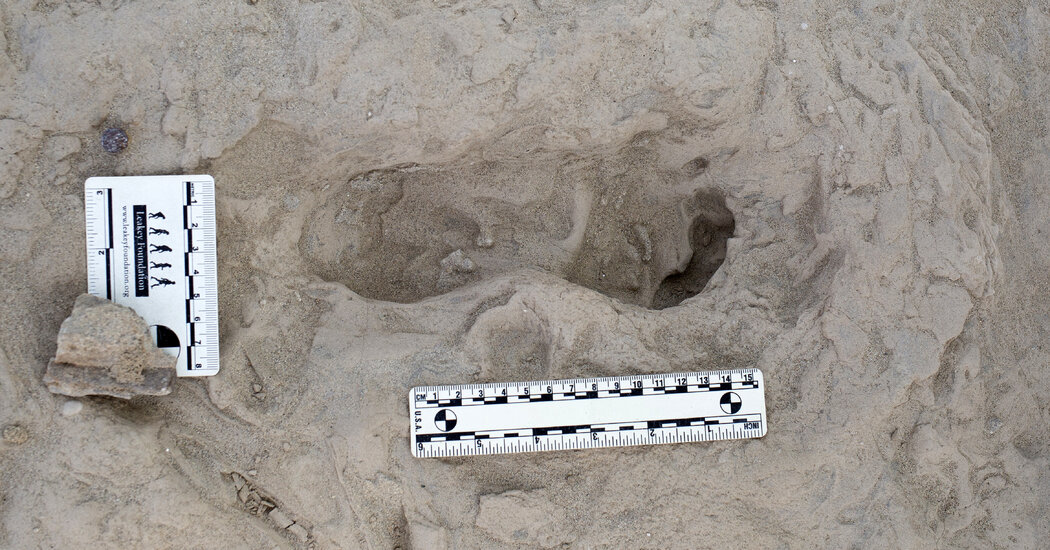A million and a half years ago, amid giant storks and the ancestors of antelopes, two extinct relatives of humans walked along the same muddy lakeshore in what is today northern Kenya, new research suggests.
An excavation team uncovered four sets of footprints preserved in the mud at the Turkana Basin, a site that has led to important breakthroughs in understanding human evolution. The discovery, announced on Thursday in a paper in the journal Science, is direct evidence that different kinds of human relatives, with distinct anatomies and gaits, inhabited the same place at the same time, the paper’s authors say.
It also raises questions about the extent of the species’ interactions with each other.
“They might have walked by one another,” said Kevin Hatala, an evolutionary anthropologist at Chatham University in Pittsburgh who led the study. “They might have looked up in the distance and seen another member of a closely related species, occupying the same landscape.”
Based on skeletal remains found in the region, Dr. Hatala’s team attributed the footprints to Paranthropus boisei and Homo erectus, two types of hominins, the group consisting of our human lineage and closely related species. Paranthropus boisei had smaller brains along with wide, flat faces and massive teeth and chewing muscles; Homo erectus more closely resembled modern human proportions and are thought to be our direct ancestors.
Scientists have long known that different types of hominins coexisted on Earth. Homo sapiens, who emerged only around 300,000 years ago, shared the planet with Neanderthals and Denisovans for thousands of years. Traces of their DNA are still present in us today.
But evidence of species overlap and how behavior differed from one species to another is mostly inferred from bones. Such fossils are often preserved in irregular ways, or found in sediments that accumulate over millenniums. This can lead to a large margin of error in dating.
